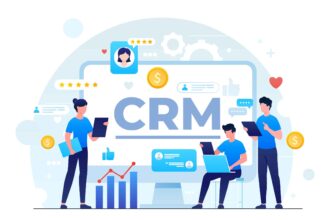
Transitioning from manual HR processes to a Human Resource Management System (HRMS) comes with several challenges, including the following:
1. Resistance to Change
- Employee and Manager Resistance: Many employees, managers, or HR staff are accustomed to the manual processes and might resist using a new system. They may feel uncomfortable with technology or worry about the learning curve.
- Change Management: Effective change management is crucial to address this resistance. Without proper training and communication, users may be hesitant to adopt the new system.

2. Data Migration and Integration
- Transferring Data: Migrating data from paper records or disparate systems to the HRMS can be complex, particularly if the existing data is disorganized, incomplete, or inaccurate.
- System Integration: Integrating HRMS with other business systems (e.g., payroll, finance, performance management) can be challenging, especially if the systems were not initially designed to work together.
3. Customization and Configuration
- System Customization: While HRMS systems often offer customization options, aligning the software to the specific needs of the organization may require time and technical expertise.
- Configuring Workflows: Adapting the HRMS to support the organization’s workflows, policies, and compliance requirements can be a detailed process that requires expertise in both the system and HR best practices.
4. Training and Skill Gaps
- Learning Curve: Staff will need to be trained to use the HRMS effectively, and the organization must invest in training programs. The process can be time-consuming and may temporarily reduce productivity.
- Technical Skills: If the system is complex or requires specialized knowledge, it may require hiring or training staff with IT or HR technology expertise.
5. Cost and Budget Constraints
- Initial Investment: Implementing an HRMS involves significant upfront costs for software licensing, customization, training, and infrastructure (e.g., hardware or cloud services).
- Ongoing Maintenance: Maintenance and support costs (e.g., system updates, bug fixes) can add up over time, making it necessary to plan for long-term budget needs.
6. Data Security and Privacy Concerns
- Data Protection: HR systems manage sensitive employee information, and ensuring the security of this data is crucial. The organization needs to invest in data encryption, secure access controls, and compliance with regulations such as GDPR or HIPAA.
- Compliance Risk: The HRMS must be regularly updated to comply with changing labor laws and regulations. This requires ongoing monitoring and adjustments to avoid compliance risks.
7. System Downtime and Technical Issues
- Disruptions: Implementing an HRMS often involves transitioning from one system to another. Any downtime or technical glitches during the switch can disrupt HR functions, leading to delays in payroll, recruitment, or performance evaluations.
- System Reliability: The organization needs to ensure that the HRMS is reliable and that technical support is available to resolve issues quickly.
8. User Adoption and Engagement
- Low Adoption Rates: Even after implementation, some users may not fully engage with the new system, leading to incomplete data entry or reliance on old processes.
- Ongoing Engagement: To maintain engagement, HR must actively promote the system’s benefits, gather feedback, and adjust the system to meet evolving organizational needs.
9. Monitoring and Continuous Improvement
- Tracking Performance: After the system is implemented, it’s important to monitor how well the HRMS is working, track performance, and make continuous improvements.
- Scalability: Ensuring that the HRMS can grow with the organization is vital. As the company expands, the HRMS should be able to scale in terms of functionality and capacity.
10. Cultural and Operational Challenges
- Cultural Shift: The transition to an HRMS may require a shift in the organizational culture. The manual processes may have built personal relationships and informal practices, which need to be formalized in the new system.
- Operational Disruptions: During the transition, HR staff may be balancing both old and new systems, leading to potential operational inefficiencies or confusion.
By acknowledging and addressing these challenges through careful planning, clear communication, and proper resources, organizations can successfully implement HRMS and fully realize its benefits, such as improved efficiency, accuracy, and strategic decision-making.







